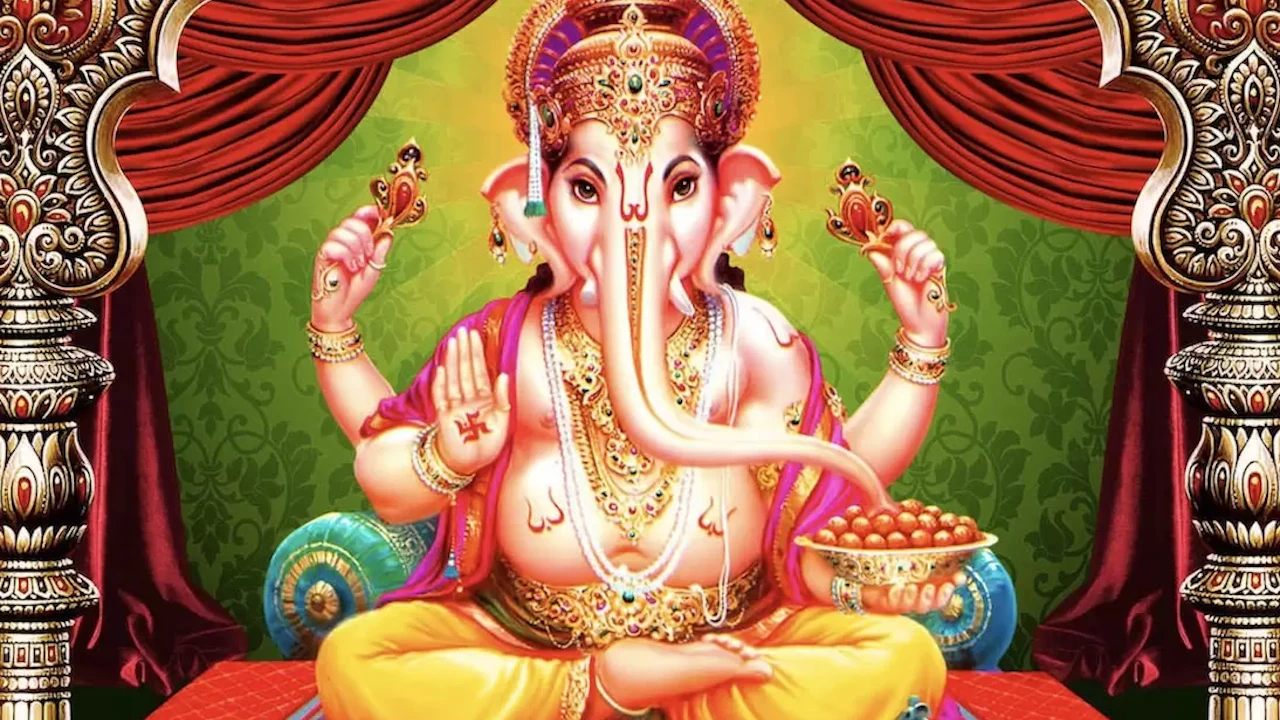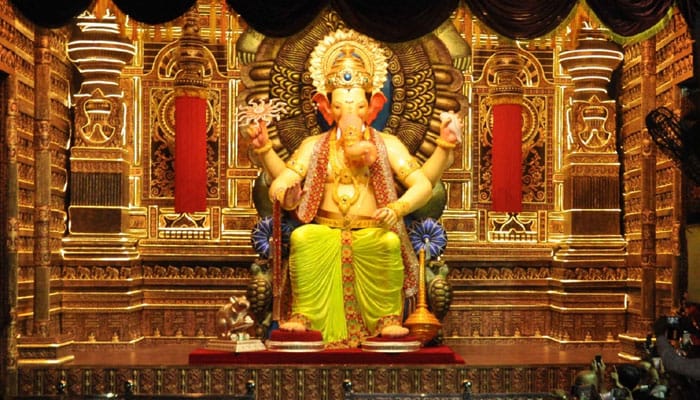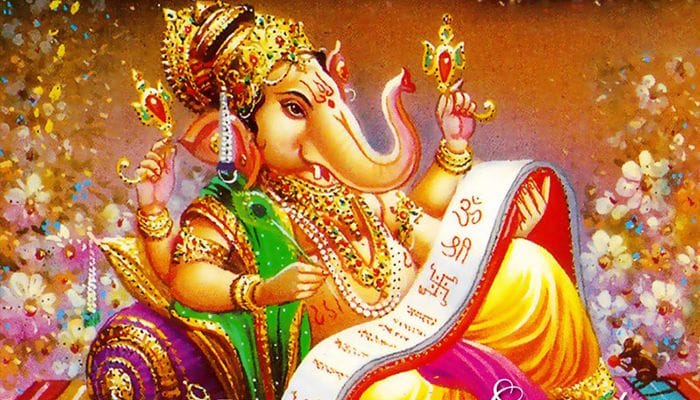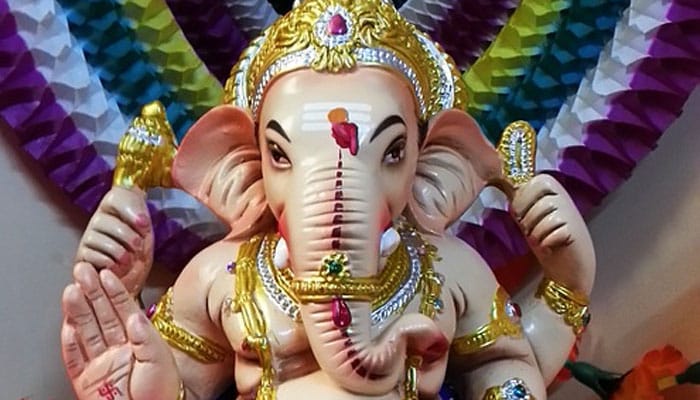Today we show you everything related to the Hindu god Ganesha. Discover his influences in Indian mythology, his powers, and most famous legends.

Who is Ganesha?
Ganesha is one of the most recognized and well known Hindu gods. He is considered the “First God” in Hindu mythology. This god has the head of an elephant, a large belly and four arms. He rides a mouse and is a fascinating god who symbolizes several important elements for his followers.
Origins
Ganesha is the first-born son of Parvati and Shiva. However, he was conceived not so much by his mother as by his father. His mother, Parvati, wanted to have children, but her husband did not. According to tradition, Ganesha was born solely from Parvati’s desire to be a mother.
Her name can be broken down as follows. “Ga” symbolizes intellect, or Buddhi, while “Na” symbolizes wisdom. That is why his followers consider him the god of intellect and wisdom. His full name is derived from two Sanskrit words. “Isha” means Lord and “Gana” translates as group, making him God of the masses.

Legends and Stories
There are many legends about Ganesha that show how powerful and important a god he is. Here are a couple that are still shared today.
How Ganesha put on his head
Ganesha’s mother, Parvati, wanted a son, but her husband did not. She decided to form a child from the earth and put him in charge of guarding their home. When Shiva, her husband, returned home, he was surprised to find that he had been denied access to the house. He became enraged and in a fit of rage cut the boy’s head from his body. Parvati was devastated and Shiva quickly realized his mistake.
He sent a group to search for the head of the first living creature he found that was sleeping. They happened upon a sleeping elephant. They removed the animal’s head and returned it to Shiva. He attached it to the young man’s body and revived him. He then made him the leader of the group and declared that the boy would be worshipped by all.

There is a second version of this story which goes as follows. Parvati gave birth to a son who was welcomed by all the gods and goddesses. The Sun-God, Lord Shani, was at the celebration but refused to look at the child. Parvati asked him why he kept looking away and Lord Shani told her that his gaze was so powerful that it would harm the baby. Parvati did not believe him and insisted that he look at his son.
Lord Shani did as he was told and the child’s head was instantly severed from his body. The gods were determined to remedy the problem and found the head of a young elephant to attach to the newborn, which was then revived.
Ganesha and the Moon
One of the most playful stories tells the story of how the moon took on the appearance we know so well. The Hindu god loved to eat, especially sweets. He never refused anything delicious and often got into trouble. The devotee once offered him a feast and the god stayed all day, eating more than his fair share.
He was about to go home in the evening, but not before taking all that was left on the table. He was slowly walking home, doing his best to balance the goodies he was carrying, when he tripped and fell to the ground. Everything he was carrying scattered and he tore his clothes.
He was embarrassed, but quickly began to pick up the food in his arms. He looked around to see if anyone noticed his fall and saw that the moon was high in the sky and looking down on him. Chandra Deva, the moon, had seen the whole event.
The moon always looked full at that time and Chandra Deva thought it was very attractive. He started laughing at Ganesha and wiped the tears from his eyes instead of helping the god and making sure he was okay.
Ganesha was now upset and embarrassed and cursed the moon, telling it that it would disappear from the sky and never show its face again. Chandra Deva immediately stopped laughing and panicked. He thought the punishment was too harsh and begged Ganesha to change his mind.
Ganesha could not undo the curse, but he could lessen its severity. Instead, he told the moon that instead of remaining full all month, it would begin to fill up and then slowly disappear as the nights came and went. Chandra Deva appreciated the small punishment and apologized to Ganesha.
Family
He is the son of Shiva and Parvati. He has a brother named Kartikeya. Some stories say he was celibate as a tribute to his mother, while others say he was married to Buddhi and Siddhi, the daughters of Brahma.
Appearance
Each part of Ganesha’s body has its own meaning and value. His elephant head is said to represent intelligence, discriminating power and fidelity. This god broken tusk shows his ability to overcome dualism. His oversized ears signify wisdom and his ability to listen to those who ask for help. They also serve as a reminder of how important it is to listen when it comes to discussing ideas and thoughts.

Ganesha’s curved trunk represents intellectual potential, while the Trishula depicted on his forehead symbolizes all aspects of time (past, present and future). His belly has infinite universes while signifying nature and equanimity. He is able to consume the sorrows of the world and protect it from harm.
He has four arms (sometimes more, depending on the artistic representation) which are said to represent the internal attributes of the body. One symbolizes the mind, the other the intellect and the third the ego. The fourth arm symbolizes consciousness.
Because Ganesha’s body is a copy of the outline found in the Devanagari chart indicated in the Bija Mantra, he is considered the embodiment of the entire Cosmos. This is why he is so important to the Hindu religion, as he symbolizes almost everything that is important to humans.
Symbology
Ganesha is mostly tied to the symbolism of his body, but there are other symbols associated with the deity. The mouse on which he rides represents his humility and his ability to make use of every area of the mind. The Prasad near his feat symbolizes both sharing and giving. He also has an axe to remind those who follow him to cut ties with materialistic attachments.

